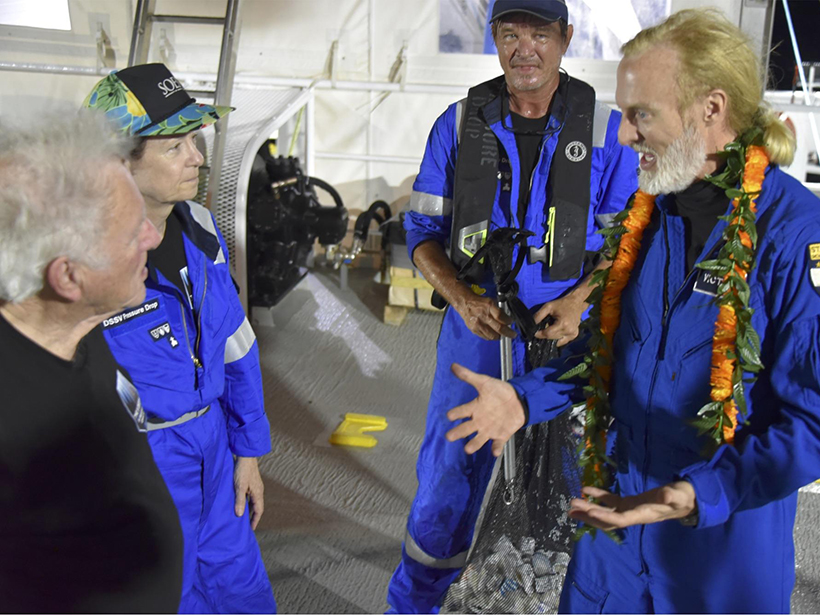When Dallas, Texas, businessman and extreme explorer Victor Vescovo set a new depth record in May, diving to 10,928 meters in the Challenger Deep area of the Mariana Trench in his submersible Limiting Factor, news outlets around the world covered the feat (along with his discovery of what appeared to be a plastic bag on the ocean floor).
But behind the headlines was a scientist: Patricia Fryer, a geologist with the Hawai‘i Institute of Geophysics and Planetology at the University of Hawai‘i at Mānoa. A deep-ocean researcher with more than 40 years of experience working around the Mariana Trench, Fryer was asked to serve as Limiting Factor’s science adviser because of her expertise in the region. She hoped the expedition would be an opportunity to collect samples from one of Earth’s most extreme environments.
“We want to know what the limits of life are. Here we have a region in which we have some of the most challenging environments on the planet.”
“We want to know what the limits of life are,” Fryer says. “Here we have a region in which we have some of the most challenging environments on the planet.”
Fryer studies the environments around plate boundaries on the ocean floor. On previous expeditions, she’s worked with remotely operated vehicles to sample sediments and fluids released by a downgoing plate in a subduction zone, subjected to increasing pressure and temperatures as it descends into the mantle.
Fryer has been able to collect samples from seeps on the sides of seamounts, but, she says, “we didn’t have any tools to go to the deeper parts of the trench, at the greatest depths.”
Trouble Retrieving Samples
With four dives planned to the Challenger Deep and one to the Sirena Deep, the second-deepest part of the Mariana Trench, Fryer hoped Vescovo would be able to bring back samples from seeps much farther down, below 6,500 meters.
“Unfortunately, the manipulator on the sub had some difficulty on the deepest dives, so Victor was unable to get samples with the manipulator,” Fryer says. “Fortunately, however, on one very deep dive, around 10,700 meters or so, he bumped into the seafloor by accident.”
When engineers from Triton Submarines, the company that designed and built Limiting Factor, took the sub apart for maintenance, they found sediment in a battery compartment. Fryer is now studying the material. In addition to being among the deepest samples ever collected, the find is exciting because it comes from an overriding plate; previous samples came from downgoing plates.
Fryer hopes to continue working with Limiting Factor, which is the only submersible certified to travel to any depth within the ocean. “What I would like to see is an appropriate, scientifically eager group purchase the sub and continue exploring with it,” she says.
Fryer herself has experience with the deep, including a dive to 6,498 meters aboard the Japanese Shinkai 6500 submersible in 2008, and says she would love to dive in Limiting Factor.
“I feel very strongly that the human presence brings an important dimension to observation of the seafloor,” Fryer told Eos. “I love remotely operated vehicles and the fact that you can take them almost anywhere. But you can’t sit there and look to the left, and look to the right, and see an animal community, for example, reacting to the approach of a predator. You can look out the portholes of a sub and see the context of what you’re looking at.”
—Ilima Loomis (@iloomis), Freelance Writer
Citation:
Loomis, I. (2019), Limiting Factor was a science opportunity for a deep-sea geologist, Eos, 100, https://doi.org/10.1029/2019EO127045. Published on 03 July 2019.
Text © 2019. The authors. CC BY-NC-ND 3.0
Except where otherwise noted, images are subject to copyright. Any reuse without express permission from the copyright owner is prohibited.

